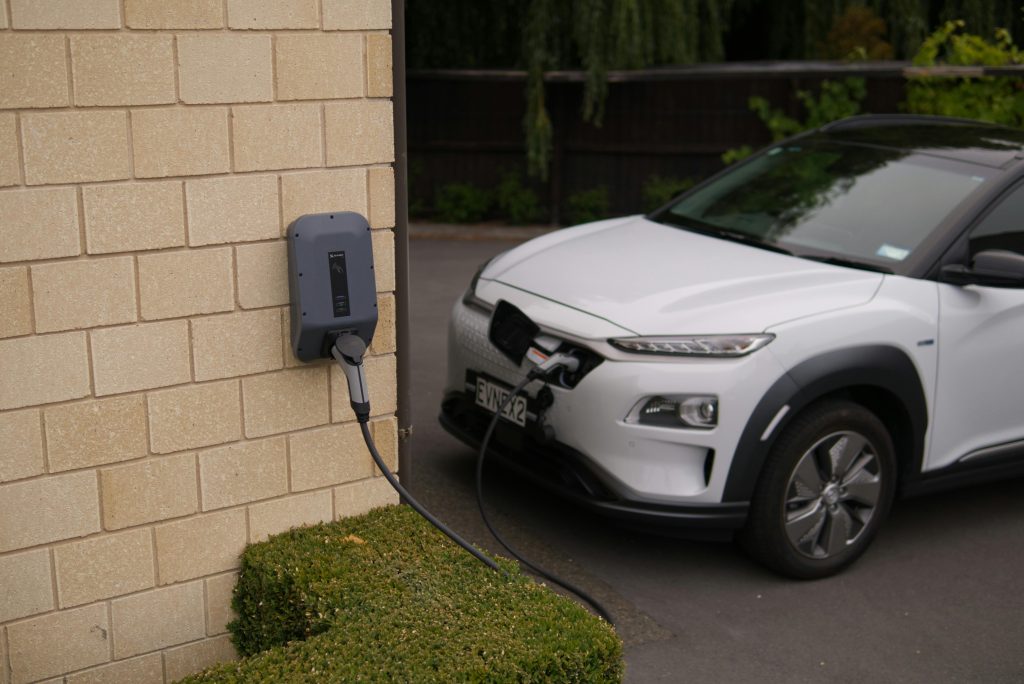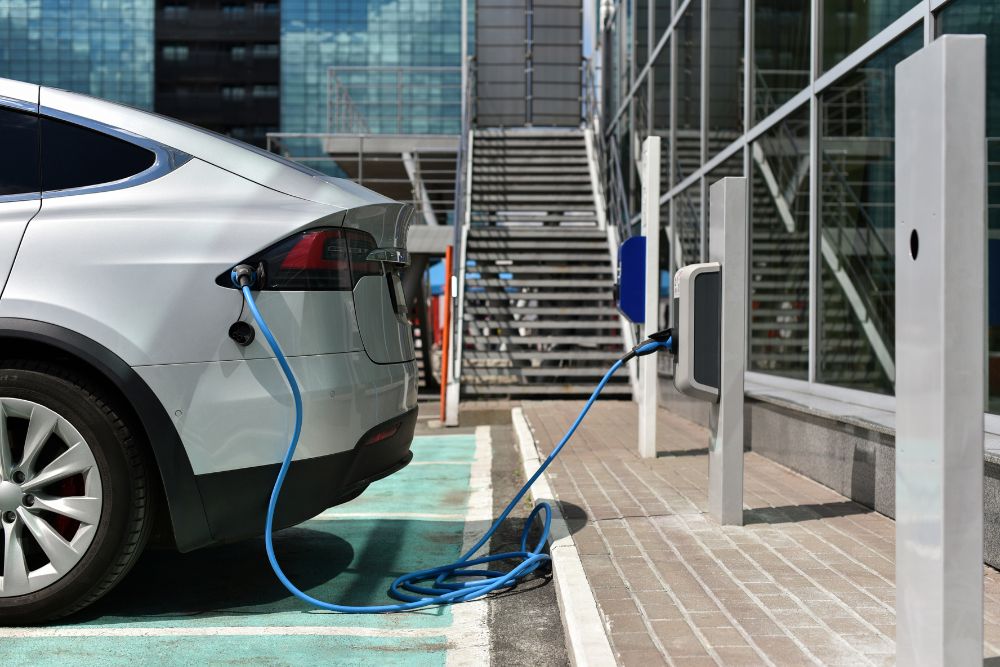
Understanding the different levels of EV charging is crucial for electric vehicle owners. The three primary levels—Level 1, Level 2, and Level 3—offer various charging speeds and power outputs, each suitable for different use cases.
Overview of the Three EV Charging Levels
1. Level 1 Charging
- Power Output: 1-1.8 kW
- Charging Speed: Provides 3-7 miles of range per hour
- Time to Full Charge: Takes approximately 22-40 hours for a Battery Electric Vehicle (BEV)
2. Level 2 Charging
- Power Output: 3-22 kW
- Charging Speed: Provides 10-75 miles of range per hour
- Time to Full Charge: Significantly faster than Level 1, up to 19 times quicker
3. Level 3 Charging (DC Fast Charging)
- Power Output: 30-360 kW
- Charging Speed: Charges a standard EV in under 20 minutes
- Use Cases: Ideal for fleets, auto dealerships, highway services, logistics hubs
Importance of Understanding Different Charging Levels
For electric vehicle owners, knowing the differences between these charging levels can help optimise their charging routines and infrastructure investments. Level 1 chargers might be suitable for overnight home charging in areas with low daily mileage needs. In contrast, Level 2 chargers are more appropriate for quicker residential charging or workplace environments. Level 3 chargers, offering the fastest option, are essential for long-distance travel and commercial applications.
Choosing the right level ensures efficiency and convenience whether you’re considering EV chargers for your business, such as charging points for business parks, or looking to install home EV chargers for faster residential charging.
Key Factors Driving the Adoption of Electric Vehicles
A variety of factors are accelerating the adoption of electric vehicles (EV adoption), making them an increasingly popular choice among consumers and businesses.
Government Incentives and Policies Encouraging EV Use
Government incentives play a crucial role in promoting EV adoption. These include:
- Tax Credits: Many countries offer substantial tax credits to reduce the cost of purchasing an electric vehicle.
- Subsidies: Direct financial subsidies can lower the upfront cost for consumers.
- Regulations: Emission regulations are pushing manufacturers to produce more electric models.
Diverse Range of Electric Vehicle Models and Options
The market now offers a wide array of electric vehicle models, catering to different needs and preferences:
- Compact Cars: Ideal for city driving and short commutes.
- SUVs and Trucks: Suitable for families and businesses needing more space.
- Luxury Models: High-end options that combine performance with sustainability.
Investment in Charging Infrastructure by Public and Private Sectors
Robust charging infrastructure is essential for widespread EV adoption. Investments are being made in both public and private sectors to expand this infrastructure:
- Public Charging Stations: More stations are being installed in urban areas, highways, and public spaces.
- Private Installations: Businesses are offering workplace charging solutions to employees, enhancing convenience.
The availability of commercial EV charger installation solutions further supports the growth of electric vehicles by catering to various business needs.
Shifting Consumer Perceptions Towards Sustainable Transportation
Consumers are increasingly prioritizing sustainability, which significantly impacts their vehicle choices:
- Environmental Concerns: Awareness about climate change drives interest in zero-emission vehicles.
- Cost Savings: Lower fuel and maintenance costs make electric vehicles financially attractive.
Shifting consumer perceptions also contributes to the demand for residential charging solutions, making home EV charger installations a growing trend.
A Closer Look at Each EV Charging Level
Level 1 Charging
Level 1 chargers use a standard 120-volt AC outlet and provide a power output of 1 to 1.8 kW. Here’s what you can expect from Level 1 charging:
- Charging Speed: 3-7 miles of range per hour
- Full Charge Time: 22-40 hours for a Battery Electric Vehicle (BEV)
Advantages:
- Accessible using existing household outlets
- No additional installation costs
Limitations:
- Extremely slow charging speeds
- Not suitable for daily commuting needs if the vehicle has a larger battery capacity
Level 2 Charging
Level 2 chargers work with a 240-volt AC outlet and deliver power outputs between 3 and 22 kW. This makes them much faster than Level 1 chargers.
- Charging Speed: 10-75 miles of range per hour
- Full Charge Time: Typically within a few hours, depending on the vehicle and charger capacity
Advantages:
- Faster charging suitable for regular use
- Commonly installed in homes, workplaces, and public spaces
Limitations:
- Requires specialized installation which can be costly
- Higher electricity consumption may raise utility bills
Level 3 Charging (DC Fast Charging)
Level 3 chargers, also known as DC Fast Chargers, use DC power and offer the fastest charging speeds, with outputs ranging from 30 to over 400 kW.
- Charging Speed: Can provide up to 1400+ miles of range per hour
- Full Charge Time: Under 20 minutes for many standard EVs
Advantages:
- Ideal for long-distance travel and commercial applications
- Substantially reduces downtime for high-mileage vehicles like fleets and taxis
Limitations:
- Expensive infrastructure and installation costs
- Limited availability compared to Level 2 chargers
Understanding the Technical Aspects

Differentiation Between AC-Type and DC-Type Chargers
Electric vehicle charging involves two primary types of chargers: AC-type chargers and DC-type chargers.
AC-Type Chargers
Ac-type chargers are used in Level 1 and Level 2 charging. They utilize alternating current (AC) from the grid and require onboard converters within the EV to transform AC to direct current (DC). Generally, they have lower power outputs, which results in slower charging speeds.
DC-Type Chargers
DC-type chargers are used in Level 3 fast charging. Unlike Ac-type chargers, they convert AC to DC externally before delivering it directly to the EV’s battery. This bypasses the vehicle’s onboard converter, allowing for higher power outputs and significantly faster charging times.
Commonly Used Level 3 Charging Connectors
Level 3 fast charging employs specialized connectors to accommodate high power outputs. The most commonly used connectors include:
CCS1
CCS1 is predominantly used in North America. It combines a Type 1 connector for AC charging with additional pins for DC fast charging.
CCS2
CCS2 is the standard connector in Europe. It integrates a Type 2 connector for AC charging with extra pins for DC fast charging.
CHAdeMO
CHAdeMO is widely adopted in Japan. Unlike CCS connectors, it is dedicated solely to DC fast charging, offering robust compatibility with many Japanese EV models.
Understanding these technical aspects ensures you select the appropriate charger type and connector for your specific needs, optimizing both convenience and efficiency.
Exploring Use Cases and Applications
Different EV charging levels cater to various scenarios based on charging speed and convenience. Each level has its unique applications, ensuring electric vehicle owners can choose the most appropriate option for their needs.
Residential Charging
Level 1 chargers are ideal for residential use, especially when vehicles are parked overnight. These chargers provide a slow but steady charge, delivering around 3-7 miles of range per hour. This makes them suitable for daily commuting needs without requiring rapid recharging.
Level 2 chargers offer a faster alternative for home installations. With a power output of 3-22 kW, they can fully charge most EVs overnight or even within a few hours. They are perfect for households with multiple EVs or higher daily mileage requirements.
Workplace Charging
Workplace charging stations typically utilize Level 2 chargers. Employees can leave their vehicles charging during work hours, gaining up to 75 miles of range per hour. This not only supports greener commuting options but also reduces range anxiety among employees.
Public Fast Charging Stations
Public fast charging stations predominantly feature Level 3 chargers. These DC fast chargers can replenish an EV’s battery in under 20 minutes, making them ideal for quick stops during errands or commutes. Locations such as shopping centers and urban hubs benefit from these high-speed chargers by attracting EV drivers who need rapid recharges.
Long-Distance Travel
For long-distance travel, Level 3 charger applications come into play at highway service areas and logistics hubs. These locations require swift charging solutions to minimize downtime during extended trips. Level 3 chargers with outputs ranging from 30 kW to 360 kW ensure that vehicles can gain substantial range quickly, facilitating seamless long-distance journeys.
Each EV charging level serves distinct use cases, enhancing the overall EV ownership experience through tailored solutions for diverse needs.

The Future of EV Charging Technology
The future of EV charging is bright, with significant advancements on the horizon. High-power charging solutions are evolving rapidly, aiming to reduce charging times significantly. Technologies such as ultra-fast chargers capable of delivering power up to 350 kW promise to charge an electric vehicle in mere minutes, making EVs even more convenient for users.
Vehicle-to-grid (V2G) integration represents another groundbreaking innovation. V2G allows electric vehicles to communicate with the power grid and return electricity to it during peak demand periods. This not only supports grid stability but also offers potential cost savings for EV owners by enabling them to sell excess energy back to the grid.
Key Emerging Trends:
- Ultra-Fast Chargers: New high-power chargers pushing boundaries up to 350 kW.
- Wireless Charging: Inductive charging technology for seamless and cable-free energy transfer.
- Smart Charging Systems: Integration with IoT and AI for optimized energy management.
V2G Benefits:
- Grid Support: Provides additional power during peak usage times.
- Economic Incentives: Potential for financial returns by selling energy back to the grid.
- Enhanced Energy Management: Promotes efficient use of renewable energy sources.
Emerging trends and innovations in high-power solutions and V2G technology underscore the dynamic evolution of EV charging infrastructure. Adapting these advancements will be crucial in meeting the growing demands of electric mobility.
Conclusion
Embracing the diverse levels of EV charging is essential as the electric vehicle landscape continues to evolve. Understanding the differences between Level 1, Level 2, and Level 3 charging enables you to make informed decisions tailored to your specific needs, whether it’s for residential use, workplace charging, or long-distance travel.
To navigate this complex ecosystem effectively, consulting industry experts like Elite Vehicle Chargers can provide you with optimal charging solutions. With their extensive knowledge and comprehensive guides on DC fast charging and battery energy storage systems, Elite Vehicle Chargers helps you stay ahead in the rapidly advancing world of electric vehicles.
- Understanding various EV charging levels: Ensures efficient and appropriate use based on your requirements.
- Consulting experts like Elite Vehicle Chargers: Offer valuable insights and tailored solutions to maximize your EV charging infrastructure.
By staying informed and leveraging expert advice, you can fully harness the benefits of the evolving EV charging technologies.
Looking to invest in the future of clean transportation? EV charging stations present a lucrative business opportunity, and we’re here to help you take the first step. At Elite Vehicle Chargers, we offer innovative, cost-effective solutions tailored to your business needs.
Ready to explore your options? Book a free site survey today or contact us to learn more about how you can maximize your investment in EV charging stations. Whether you’re looking to attract new customers, reduce carbon emissions, or boost profitability, we’ve got you covered!
Get started now and drive your business forward with Elite Vehicle Chargers.
